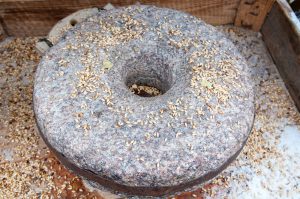By Heide Kennedy, Arizona Farm Bureau Communications Intern
For a long time now, both my mom and I have been gluten intolerant, meaning we can’t have anything that has been made with wheat or any other gluten-containing grain. At first, this sort of posed a challenge. We had to learn what substitutes we could use for wheat flour in recipes, as well as how to cook with those different substitutes. One thing that has been interesting though is learning about all of the other kinds of gluten-free grains that exist but that are not as well known. One such grain is buckwheat. Buckwheat is 100% gluten-free and is surprisingly not actually a grain or wheat at all.

(photo credit: BigStockPhoto.com)
So, if it’s not grain or wheat, then what is buckwheat? According to registered dietician Gillean Barkyoumb, buckwheat is actually what is known as a pseudocereal, which is basically a plant that forms a starchy seed that can be used similarly to a cereal or rice. Buckwheat can be used to make so many different things such as flour, noodles, tea, honey, and granola.
Nutritionally, buckwheat has a lot to offer. While it is mostly a carbohydrate, it also has more protein than regular wheat or rice. Additionally, it is also a complete protein, meaning that it has all 9 of the essential amino acids that our bodies need. Buckwheat also has a lot of fiber, making it a great prebiotic. It also is very rich in antioxidants and other nutrients such as manganese, magnesium, iron, copper, and phosphorous.
Whether you need gluten-free food grain options or not, buckwheat is definitely one worth trying, as it is loaded with good nutrition and tops other more common grains. Consider giving some of these recipes that feature buckwheat a try!
- Breakfast Buckwheat Bowls with Fruit | Babaganosh
- Buckwheat Pancakes Recipe – Love and Lemons
- Buckwheat Salad, Hearty Mediterranean Salad | The Food Blog
- Soft Buckwheat Bread Recipe (GF, DF) | Healthy Taste Of Life
For more health-related articles, check out the Fill Your Plate blog!

